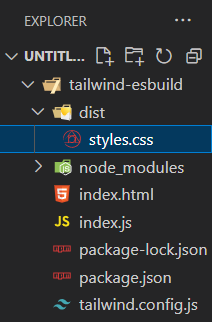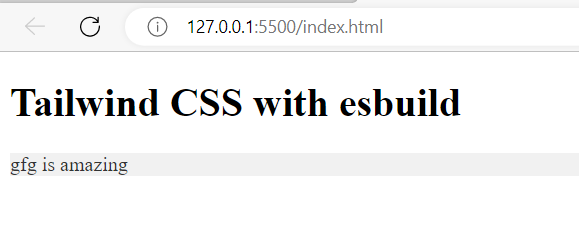
|
|
Tailwind CSS is a utility-first CSS framework for building rapid custom UI. It is a highly customizable, low-level CSS framework that gives you all of the building blocks that you need. An esbuild is a bundler for the web project that brings the build tool for performance enhancement, along with facilitating to development of an easy-to-use modern bundler. Combining these tools can provide an efficient development experience. In this article, we will learn how to use Tailwind CSS with esbuild, along with understanding their basic implementation through the examples. In order to use Tailwind CSS with esbuild, we need to follow the below steps. Steps for installing the tailwind CSS with the esbuildFollow the below steps to set up a tailwind CSS with the esbuild bundler: Step 1: Setup a new project by creating a new directory mkdir tailwind-esbuild Step 2: Initialize the package.json file npm init -y
Step 3: Install the tailwind-esbuild dependencies npm install tailwindcss esbuild
Step 4: Create a Tailwind CSS configuration file npx tailwindcss init
Step 5: Create a folder inside which create styles.css and add your CSS code CSS
Project Structure
Example 1: In this example, we will use Tailwind CSS with esbuild.
HTML
CSS
Javascript
npx esbuild index.js --bundle --outfile=dist/bundle.js
The above command will create a file bundle.js inside the ‘dist’ folder which contained bundled javascript. Output:
Example 2: This is another example that illustrates the implementation of Tailwind CSS with esbuild.
HTML
CSS
Javascript
Step 7: Run the following command to bundle the JavaScript file using esbuild. npx esbuild index.js --bundle --outfile=dist/bundle.js The above command will create a file bundle.js inside the ‘dist’ folder which contained bundled javascript. Output:
|
Reffered: https://www.geeksforgeeks.org
| CSS |
Type: | Geek |
Category: | Coding |
Sub Category: | Tutorial |
Uploaded by: | Admin |
Views: | 13 |

